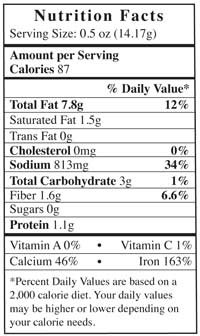Fyi…
Careful with the black olives. Some are artificially blackened, by treating in a high iron-containing chemical solution. Which turns them black, and then the nutritional label says they are rich in iron.
I would rather eat naturally blackened olives, blackened by the sun and other elements in nature, than those exposed to a Frankenstein chemical concoction.
Read the ingredients list on the cans and jars of black olives. If you see that they used a chemical solution containing iron, then it’s not natural…just a shitload of chemical dyes. They also tend to have an aluminum taste to them, because of so much chemicals that were absorbed.



